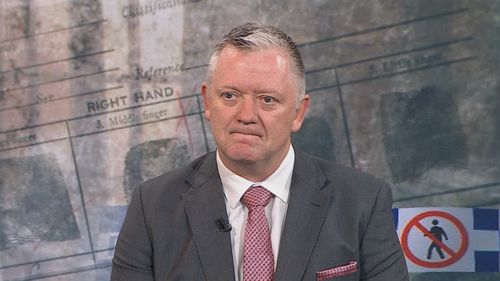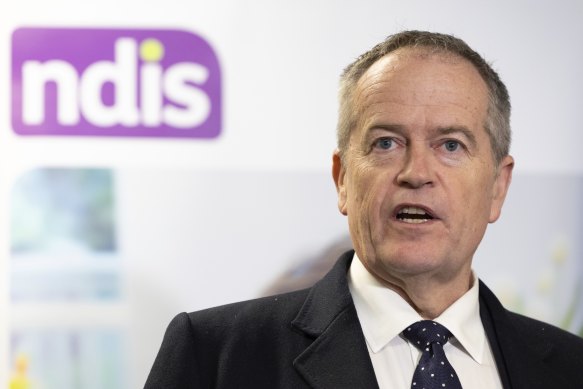Llast week an acquaintance who owns a secondhand Japanese electric car, brought to Australia as part of a bulk purchase by the Good Car Company, posted a quiet boast. His wife of him had put their Nissan Leaf in for its annual service of her. No major problems were found – just an underinflated tire. The total bill? $120.
Reading that sent me to the mess of my glovebox to work out how much I had paid mechanics to keep my Subaru Outback running over the past year. It added up to more than $700.
I don’t have the time or the inclination to estimate what I’ve spent on petrol over the same period, but I know I coughed up $115 – nearly as much as for the annual service on the Leaf – just to fill the tank last Monday.
If this sounds like a prelude to making a case that the time for an EV expansion is well overdue – and that there is a unique political opportunity in the months ahead – it is.
Last year, about 2% of new cars sold in Australia were electric. It was a jump from 0.8% in 2020 but still thousands behind many other countries. Across the globe, the average in the final quarter last year was 13%, with Europe and China leading the pack.
This isn’t surprising when you consider there are about 450 EV models available on the global market, but fewer than 10 can be bought in Australia for less than $60,000 and buyers may have to wait months for their car to be delivered.
Data from 2018 shows the average greenhouse gas released per kilometer by a new passenger car in Australia was about 30% higher than in the US, 40% higher than in the EU and nearly 50% higher than in Japan.
Not coincidentally, greenhouse gas emissions from transport in Australia surged by more than 20% between 2005 and when Covid-19 hit in 2020. They fell a bit during the lockdown years but are expected to jump back to pre-pandemic heights this year.
Official projections last year showed little change was expected in Australia’s transport emissions before 2030. Again, this isn’t surprising. There is no national policy to reduce them.
The lack of policy is not due to a lack of policy ideas. Among the most popular is the introduction of mandatory vehicle fuel efficiency standards. They would set an emissions target for manufacturers, measured in grams of COtwo released per kilometer and averaged across all the new cars they sell. The target would be gradually reduced to zero, when it would effectively become a ban on new fossil fuel cars.
While Australia has resisted, fuel efficiency standards are common elsewhere – they cover about 80% of the global light vehicle market.
why? There are arguments relating to climate impact, energy security and supporting manufacturing industries. Car companies themselves want fuel efficiency standards, arguing there won’t be an adequate supply of EVs into the country until a decent policy is in place.
And the evidence says efficiency standards make economic sense – they reduce fuel costs.
According to a recent report by the Australia Institute’s Audrey Quicke, if Australia had introduced fuel efficiency standards six years ago, the country’s drivers would have saved $5.9bn. A ministerial forum on vehicle emissions standards in 2016 found the net benefit across the country by 2040 could be nearly $14bn.
MPs from what was then the Coalition government were persuaded. Josh Frydenberg, then the minister for energy and the environment, famously compared the rise of EVs to the iPhone and predicted people who mocked the technology would one day be using it.
Despite this, the Coalition shelved its plan for mandatory standards in the face of resistance internally and from the auto industry. It abandoned it completely during the 2019 election campaign, when Scott Morrison claimed a Labor policy based on the forum’s recommendation would “end the weekend”.
Unreleased polling suggests the attack set back community support for EVs. And, of course, the Coalition won that election.
Labor responded by winding back its commitments. Its pledge on EVs before this year’s election was that it would reduce tariffs and taxes, require 75% of commonwealth fleet purchases and leases to be low-emissions vehicles – a step that should help create a second-hand market – and increase spending on charging infrastructure. It would then develop a broader national strategy if it won power.
That brings us to this week.
An invitation-only national EV summit will be held in Canberra on Friday bringing together car company executives, infrastructure bosses and senior MPs from across the country to discuss the best path ahead.
Its main subject will be how to design fuel efficiency standards. There is a growing expectation that it is now a matter of when, not if, they are introduced. The evidence in favor is overwhelming and the biggest roadblock – the federal Coalition government – has been removed.
The summit has been instigated in part by Boundless, a new not-for-profit created by the tech billionaire Mike Cannon-Brookes and his wife, Annie. Led by Eytan Lenko, the former chair of the thinktank Beyond Zero Emissions, Boundless aims to accelerate climate solutions needed for Australia to become a renewable energy superpower by 2030, with an initial focus on EVs.
No one should underestimate the scale of transformation needed to get the country’s vehicle fleet to zero emissions in just 28 years. Given the average life of a car on Australian roads is about 10 years, the sale of new fossil fuel cars would have to end by about 2035. Any policy that doesn’t set the country on that path is not a policy for net zero.
But the Albanese government has a freedom on EV policy that it has not granted itself in other climate-related areas. By ruling nothing out before the election, it starts with a clean slate – and the resistance from the auto industry, while not nonexistent, is less powerful than in other parts of the economy.
The climate change and energy minister, Chris Bowen, has so far responded to questions about fuel efficiency standards by acknowledging that “everything is on the table”. A final policy is still some way off, but he is expected to use his keynote address to the summit to start to flesh out just what the road ahead will look like.











